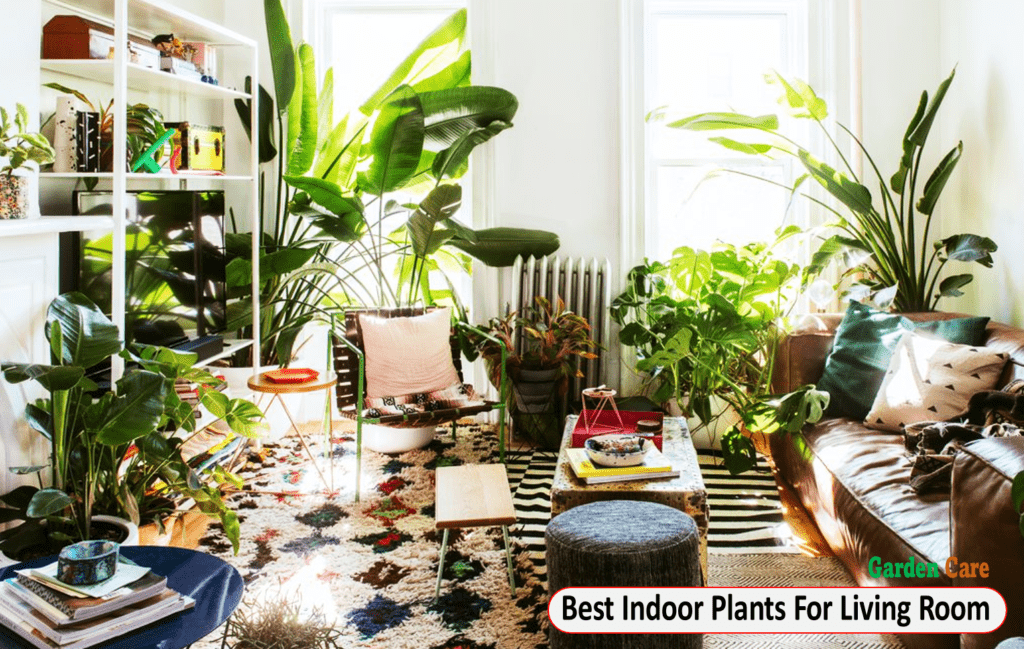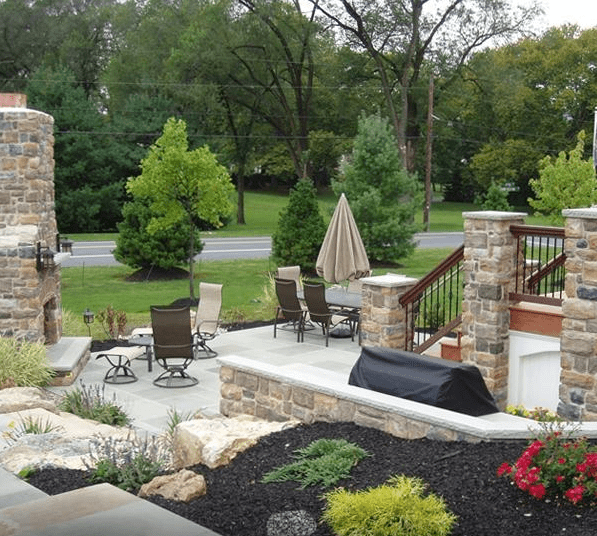Best Plants for Small Vegetable Garden: The best plants for a small vegetable garden are tomatoes, peppers, lettuce, and herbs like basil and cilantro. These plants are suitable for small spaces and provide a variety of fresh ingredients for cooking.
Additionally, they are easy to care for and require minimal maintenance. By growing these plants in your small garden, you can enjoy the benefits of homegrown vegetables and add flavor to your dishes. So, whether you have a balcony, patio, or limited backyard space, consider these plants to create a productive and enjoyable small vegetable garden.
Benefits Of Small Vegetable Gardens
Small vegetable gardens offer a host of benefits that go beyond just providing fresh produce. Whether you have limited space or simply prefer a smaller garden, these compact patches of greenery can significantly improve various aspects of your life. From tackling food security concerns to promoting both personal and environmental well-being, small vegetable gardens are a valuable addition to any space.
[ez-toc]

Improving Food Security
Growing your vegetables in a small garden can be an efficient way to enhance food security. With rising concerns about global food availability and the quality of store-bought produce, having your source of fresh and nutritious vegetables can provide peace of mind. Additionally, the convenience of plucking vegetables directly from your backyard ensures a constant supply of pesticide-free and additive-free food right at your fingertips.
Health And Well-being
Small vegetable gardens contribute significantly to our health and well-being. The physical activity involved in gardening helps burn calories, strengthens muscles, and improves overall fitness. Moreover, having access to homegrown vegetables promotes a diet rich in nutrients, vitamins, and antioxidants. The satisfaction of nurturing and harvesting your produce also brings a sense of accomplishment, which boosts mental well-being and reduces stress levels.
Environmental Sustainability
Creating a small vegetable garden contributes to environmental sustainability in multiple ways. Firstly, growing your vegetables reduces the carbon footprint created by the transportation and packaging of store-bought produce. Secondly, home gardening allows control over the use of pesticides and synthetic fertilizers, minimizing harm to the ecosystem and promoting organic practices. Thirdly, small gardens help conserve water by utilizing rainwater harvesting techniques and efficient irrigation systems.
To summarize, small vegetable gardens bring a host of benefits including improved food security, enhanced health, well-being, and environmental sustainability. By cultivating your produce in a compact space, you can enjoy fresh and nutritious vegetables, stay active, and contribute towards a more sustainable future.
Factors To Consider For Small Vegetable Gardens
A small vegetable garden can be a great way to grow your own fresh produce, even if you have limited space. However, there are several factors to consider when planning and setting up your small vegetable garden to ensure success. These factors include:
Sunlight Availability
One of the most important factors to consider for your small vegetable garden is the availability of sunlight. Most vegetables require a minimum of 6 hours of direct sunlight each day to thrive. Before deciding on the location of your garden, observe the area throughout the day to determine how much sunlight it receives.
Once you’ve identified the sunniest area in your garden, plan your vegetable placement accordingly. Place taller plants or trellises on the northern side of your garden to prevent them from casting shade on smaller plants. This will maximize the sunlight exposure for all your vegetables, promoting healthy growth and abundant yields.
Soil Quality
The quality of your soil is another crucial factor when it comes to growing vegetables. Ensure your gardening soil is well-draining, rich in nutrients, and has a pH level suitable for vegetable cultivation. Perform a soil test to assess its fertility and adjust the nutrient levels accordingly.
If your soil is heavy or compacted, consider implementing raised beds or container gardening. This way, you can have more control over the soil quality, improve drainage, and prevent the mixing of different soil types. Additionally, enriching the soil with organic matter, such as compost or well-rotted manure, will enhance its fertility and provide vital nutrients for your vegetable plants.
Space Constraints
Dealing with limited space is a common challenge when it comes to small vegetable gardens. However, with careful planning and smart use of available space, you can still grow plenty of vegetables. Consider vertical gardening techniques to make the most of your vertical space.
Choose compact varieties of vegetables that can be grown in containers, hanging baskets, or window boxes. This way, you can utilize any unused areas like balconies, windowsills, or fences. Utilize intercropping, which involves growing plants that complement each other in the same space, to maximize productivity without sacrificing space.
Remember to provide adequate spacing between plants to allow air circulation and minimize the risk of diseases. Regularly monitor your plants’ growth and prune or thin them as necessary to ensure they have enough space to reach their full potential.
By considering factors like sunlight availability, soil quality, and space constraints when planning your small vegetable garden, you can create an optimal environment for your plants to thrive. With proper care and attention, you’ll be rewarded with a bountiful harvest of fresh, homegrown vegetables.

Ideal Plants For Small Vegetable Gardens
When it comes to having a small vegetable garden, choosing the right plants can make all the difference. The ideal plants for small vegetable gardens are those that are compact, have a high yield, and can thrive in limited space. In this article, we will explore some of the top choices for small vegetable gardens, including tomatoes, lettuce, peppers, and herbs.
Tomatoes
Tomatoes are one of the most popular choices for small vegetable gardens because they can be grown in containers on patios or balconies. They come in a variety of sizes, from tiny cherry tomatoes to larger beefsteak varieties. Some great options for small gardens are determinate varieties, which have a more compact growth habit. Examples include “Roma,” “Patio,” and “Tiny Tim.” These varieties produce an abundance of flavorful fruits and require minimal staking or support.
Lettuce
Lettuce is another excellent choice for small gardens because it grows quickly and can be harvested multiple times. There are many different types of lettuce, including loose-leaf, romaine, and butterhead varieties. For small gardens, loose-leaf lettuce is the best option as it takes up less space and can be harvested by simply trimming the outer leaves. Popular varieties for small gardens include “Black-Seeded Simpson,” “Red Sails,” and “Salad Bowl.”
Peppers
Peppers are compact plants that produce a high yield and add a bold flavor to your meals. They can be easily grown in containers or small garden plots. Some great pepper varieties for small gardens include bell peppers, jalapenos, and chili peppers. Compact varieties such as “Gypsy,” “Mini Belle,” and “Corno di Toro” are ideal for smaller spaces. These plants can be grown in pots or directly in the ground, taking up minimal space while still providing an abundant harvest.
Herbs
Herbs are a must-have for any small vegetable garden as they not only add flavor to your meals but also attract beneficial insects. Options such as basil, parsley, thyme, and mint are easy to grow and can be grown in small pots or containers. Herbs can also be planted alongside other vegetables to maximize space utilization. For example, plant basil next to tomatoes or mint next to lettuce. This way, you can make the most of your small garden by growing multiple plants in one area.
Container Gardening For Small Spaces
When it comes to small vegetable gardens, container gardening is a game-changer. Whether you have a tiny balcony, limited outdoor space, or simply want to maximize your planting options, container gardening offers a solution. In this section, we’ll explore container gardening for small spaces and how to optimize vertical space for the best plants for small vegetable gardens.
Choosing The Right Containers
When choosing containers for your small vegetable garden, opt for lightweight, durable options that provide ample room for root growth. Look for pots made of plastic, fiberglass, or cedar, as they are weather-resistant and won’t add unnecessary weight. Additionally, ensure the containers have drainage holes to prevent waterlogging, promoting healthy plant growth.
Optimizing Vertical Space
Vertical gardening is a space-saving technique ideal for small vegetable gardens. Utilize trellises, hanging baskets, and tiered planters to make the most of limited space. Vining vegetables such as tomatoes, cucumbers, and beans thrive when grown vertically, allowing you to maximize your harvest in a compact area. Additionally, vertical gardening adds visual interest to your small space garden, creating a lush, green backdrop.
Tips For Maximizing Yield In Small Vegetable Gardens
Maximizing yield in a small vegetable garden requires strategic planning and efficient plant cultivation. By implementing companion planting, succession planting, and proper watering and fertilization techniques, you can optimize the productivity of your garden space.
Companion Planting
Companion planting involves cultivating different plants together to enhance growth and deter pests. Pairing complementary plants can mitigate insect infestations and boost overall yield.
Succession Planting
Succession planting involves sowing new crops in the same space as earlier crops are harvested. This technique optimizes space and allows for continuous production throughout the growing season.
Proper Watering And Fertilization
Proper watering and fertilization are crucial for sustaining plant health and maximizing yield. Ensuring consistent irrigation and providing balanced fertilization can promote robust growth and bountiful harvests.
Frequently Asked Questions Of Best Plants For Small Vegetable Garden
What’s The Best Vegetables To Grow In A Small Garden?
The best vegetables to grow in a small garden are lettuce, tomatoes, peppers, green beans, and herbs. These plants are compact, yield good results, and require minimal space.
What Vegetable Plants Stay Small?
Some small vegetable plants include cherry tomatoes, bush beans, radishes, and salad greens. These plants are compact and perfect for small gardens or container gardening.
What Are Low Maintenance Plants For Vegetable Garden?
Low-maintenance plants for a vegetable garden include tomatoes, peppers, and herbs like basil and parsley. These plants require minimal care and can thrive in various conditions, making them ideal for busy gardeners. Regular watering, proper sunlight, and occasional fertilizing will ensure a fruitful harvest.
What Is The Best Size Vegetable Garden For A Beginner?
A beginner vegetable garden should be small and manageable. Start with a plot of around 10×10 feet or even smaller, depending on the time and effort you can put into gardening. This site allows you to learn and experiment without getting overwhelmed.
Conclusion
To conclude, growing vegetables in a small garden requires a careful selection of plants that maximize space without compromising on yield and quality. Consider the versatility of plants like tomatoes, lettuce, herbs, and radishes, as they thrive in compact areas. By focusing on plants suited for small gardens, you can create a productive and delightful vegetable patch, providing a fresh and nutritious harvest right at your doorstep.
Happy gardening!


